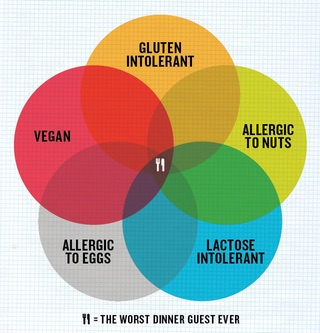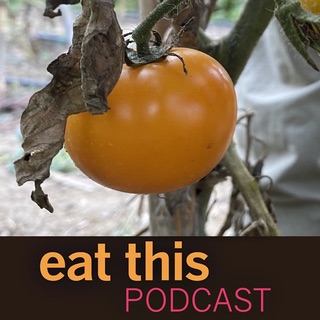
Podcast: Play in new window | Download (Duration: 34:41 — 31.8MB)
Subscribe: Google Podcasts | Spotify | Android | RSS | More
 Perhaps unsurprisingly, barbecue restaurants have featured in two really important decisions of the US Supreme Court. Katzenbach v. McClung held that Ollie’s Barbecue in Birmingham, Alabama, despite being a minuscule mom and pop operation, was nevertheless subject to the Civil Rights Act and could not deny table service on the basis of race. Newman v. Piggie Park Enterprises, in addition to denying the owner’s racist justification that “his religious beliefs compel him to oppose any integration of the races whatever,” also established that plaintiffs in civil rights cases were entitled to recover their legal fees if successful. Ollie’s, apart from a brief later renaissance, closed in 2001. Piggie Park is still going strong, still claiming to be the World’s Best Bar-B-Q.
Perhaps unsurprisingly, barbecue restaurants have featured in two really important decisions of the US Supreme Court. Katzenbach v. McClung held that Ollie’s Barbecue in Birmingham, Alabama, despite being a minuscule mom and pop operation, was nevertheless subject to the Civil Rights Act and could not deny table service on the basis of race. Newman v. Piggie Park Enterprises, in addition to denying the owner’s racist justification that “his religious beliefs compel him to oppose any integration of the races whatever,” also established that plaintiffs in civil rights cases were entitled to recover their legal fees if successful. Ollie’s, apart from a brief later renaissance, closed in 2001. Piggie Park is still going strong, still claiming to be the World’s Best Bar-B-Q.
Maurice Bessinger — the man who started Piggie Park — was an out-and-out racist. His sons, who run the business now, have to contend with that legacy. But they don’t seem willing to confront it.
Gabriela Glueck, a graduate student at Duke University’s Center for Documentary Studies, offered me her story on Piggie Park. I was delighted to accept.
Notes
- Gabriela Glueck’s website. Aside from Lloyd and Paul Bessinger and Michael Bessinger, she also spoke to Angela Jill Cooley at Minnesota State University and Soul Scholar Adrian E. Miller.
- America’s Most Political Food is Lauren Collins’ New Yorker article about BBQ and politics.
- The tension between Black pioneers of BBQ and racist restaurateurs has a long history. The story of Henry Perry, the Black entrepreneur who created Kansas City Barbecue, among many others, shows that whites were only too happy to eat Black barbecue, even if they weren’t happy to reciprocate. But I’m getting out of my depth.
- Photo by Gabriela Glueck, who also used Lumber Down, On Early Light, The Dustbin, Grand Caravan, Santo Apure, Lobo Lobo and Persimmon St from Blue Dot Sessions.



 World Philosophy Day happens later this week, which makes it a good time to be asking what constitutes good behaviour in a host and, equally, in a guest. I’m prompted by a recent article that took the rise in food allergies and intolerances as a starting point to ask how a host should act when faced with a guest whose professed allergies seem a tad suspect. Is it OK to ignore guest requests as snowflake signifiers? What should guests do when faced with intolerable food that they failed to inform their host about? In a perfect world, hosts and guests would accommodate one another’s needs; the world, however, is not perfect.
World Philosophy Day happens later this week, which makes it a good time to be asking what constitutes good behaviour in a host and, equally, in a guest. I’m prompted by a recent article that took the rise in food allergies and intolerances as a starting point to ask how a host should act when faced with a guest whose professed allergies seem a tad suspect. Is it OK to ignore guest requests as snowflake signifiers? What should guests do when faced with intolerable food that they failed to inform their host about? In a perfect world, hosts and guests would accommodate one another’s needs; the world, however, is not perfect.
 People, not least parents, have becomes concerned about the increasing proportion of obese and overweight children in wealthier countries. It has even been called an epidemic. Can biology and anthropology deepen our understanding of childhood feeding and suggest possible solutions? Tina Moffat certainly thinks so. She has studied how children are nourished in Japan, Nepal, France and her native Canada. Her book – Small Bites – rounds up the evidence and shares several important observations. Neophobia – trying very small quantities of novel foods until your body is certain they won’t harm you – is a behaviour common to all humans (and other omnivores). Picky eating, which terrifies parents in certain cultures, becomes entrenched by being rewarded. And school lunches demonstrate what society thinks makes a proper meal and the value it places on good childhood nutrition.
People, not least parents, have becomes concerned about the increasing proportion of obese and overweight children in wealthier countries. It has even been called an epidemic. Can biology and anthropology deepen our understanding of childhood feeding and suggest possible solutions? Tina Moffat certainly thinks so. She has studied how children are nourished in Japan, Nepal, France and her native Canada. Her book – Small Bites – rounds up the evidence and shares several important observations. Neophobia – trying very small quantities of novel foods until your body is certain they won’t harm you – is a behaviour common to all humans (and other omnivores). Picky eating, which terrifies parents in certain cultures, becomes entrenched by being rewarded. And school lunches demonstrate what society thinks makes a proper meal and the value it places on good childhood nutrition.
 Since the 1960s, European seed law could best be summarised as “everything not forbidden is compulsory”. There is a common catalogue of registered seed varieties, and only varieties on the list are on sale. With a flat fee for registration, only the most lucrative varieties are registered, which suits big seed companies and tomato growers, but meant that lots of varieties with more niche appeal — for home gardeners or small growers — vanished. The law is now being relaxed a little, allowing trade in seeds of “organic heterogeneous material”. Diversity, to you and me.
Since the 1960s, European seed law could best be summarised as “everything not forbidden is compulsory”. There is a common catalogue of registered seed varieties, and only varieties on the list are on sale. With a flat fee for registration, only the most lucrative varieties are registered, which suits big seed companies and tomato growers, but meant that lots of varieties with more niche appeal — for home gardeners or small growers — vanished. The law is now being relaxed a little, allowing trade in seeds of “organic heterogeneous material”. Diversity, to you and me.